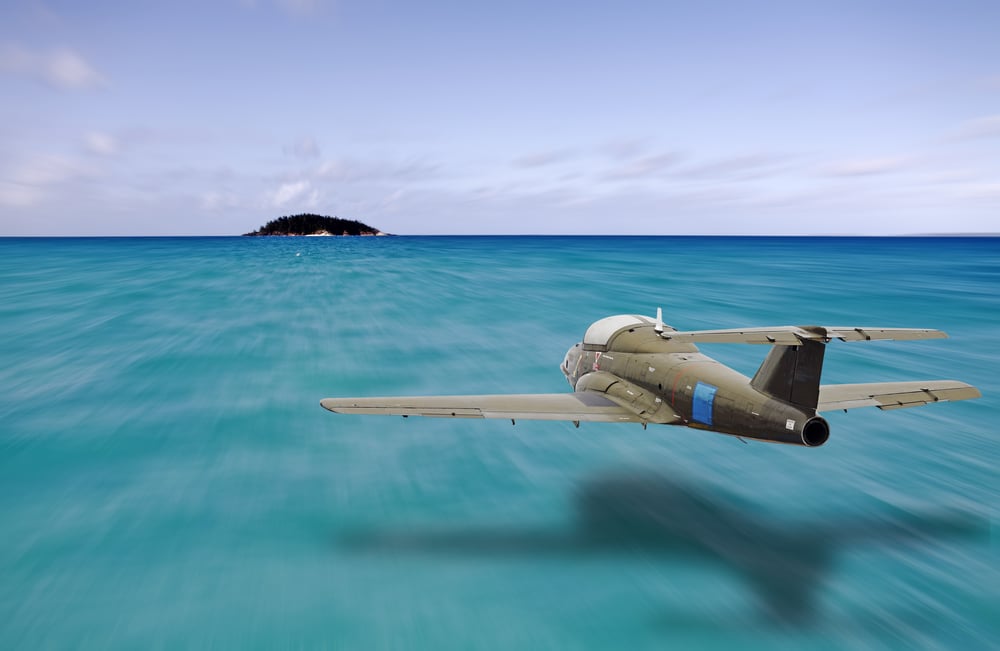Military aircraft can fly at altitudes as low as 100 feet to avoid detection by surveillance systems and anti-aircraft establishments.
One of the common traits shared by the world’s most formidable armies is stealth. This figurative cloak of invisibility and the element of surprise attached to it gives them a huge advantage over their nemesis. However, as is the case with other things, the little things are easily hidden, while the big things require more work.
The need for stealth in military affairs has led to the development of some iconic aircraft and technologies (Photo Credit: Alex Izeman/Shutterstock)
If bigger things are as big as military planes, the task becomes even more difficult. While traceability is desirable for commercial aircraft, it can be dangerous for military equipment. When materials technology and engineering fail to come to their aid, pilots must rely solely on their skills.
Low altitude flight: how high can planes really fly?
Top Gun: Maverick is an excellent depiction of what goes into preparing and flying extremely close to the ground. However, how close is exactly?
Low altitude flight in civil aviation
In an industry where standard flight heights are tens of thousands of feet, flying a few hundred feet above the ground is definitely considered low altitude flying.
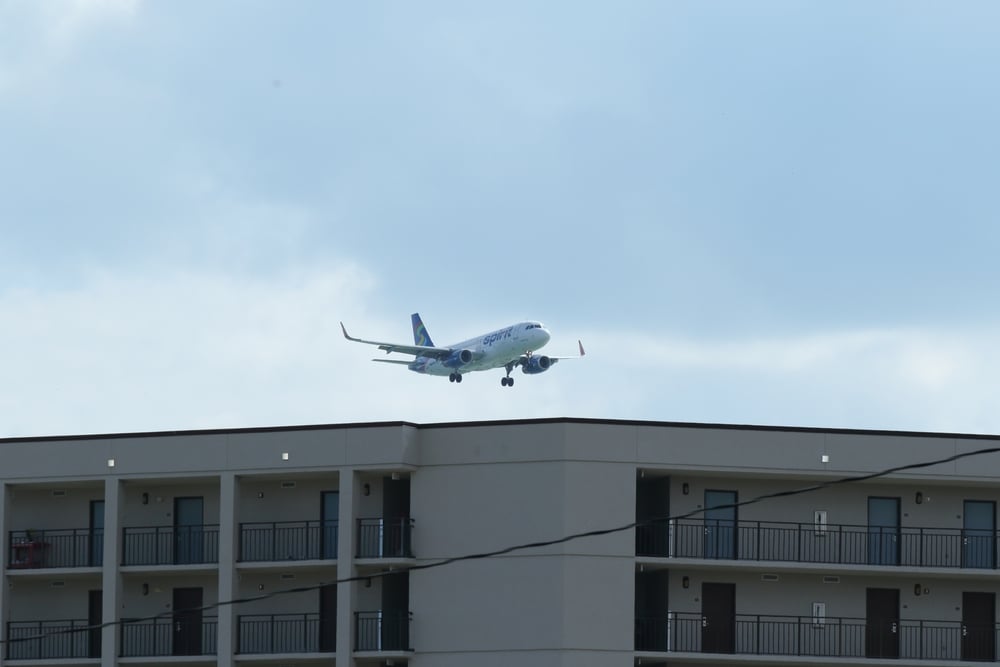
Unless changing altitude, such as takeoff or landing, civil aircraft must maintain a height of 500 feet or more. (Photo credit: Hodge Dinkins/Shutterstock)
While the Federal Aviation Administration, in its safety circular, mentions that the lowest height should not be less than 500 feet in civilian areas, the United States Air Force has aircraft capable to fly as low as 100 feet (Source).
Low altitude flight for military purposes
Flying at low altitude is not a problem; it’s the ability to fly low at high speeds that makes it risky.
Low-altitude, high-speed flights undertaken for military operations are also referred to as Nap of the Earth (NOE) flights.
Modern warfare technology has resulted in the development of various anti-aircraft establishments that operate in conjunction with radars and other surveillance units. These include surface-to-air missiles (SAMs), air-to-land radars, and anti-aircraft artillery, among others.
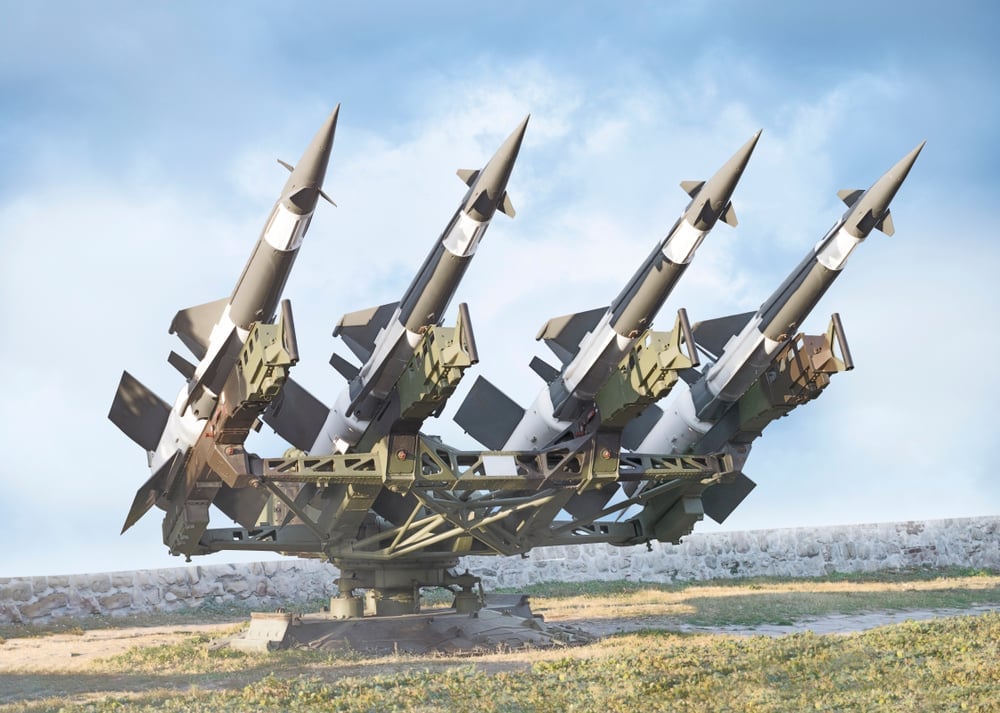
Anti-aircraft establishments work in conjunction with radar to eliminate incoming enemy craft (Photo Credit: snorkulencija/Shutterstock)
In NOE flights, military aircraft closely follow the contours of the earth’s terrain, instead of flying over them. This gives them the advantage of using fixed elements, such as mounds, valleys, tall trees, etc. as a ruse to escape the radar’s field of view.
How do fighter jets fly so close to the ground?
In order to fly close to the ground, pilots spend countless hours training in regions similar to the actual area of operation. To further assist pilots, their planes are equipped with special radar systems called Terrain Following Radars (TFR). TFRs are specially mounted equipment that plots the terrain ahead and calculates a flight path that allows pilots to maintain a constant altitude.
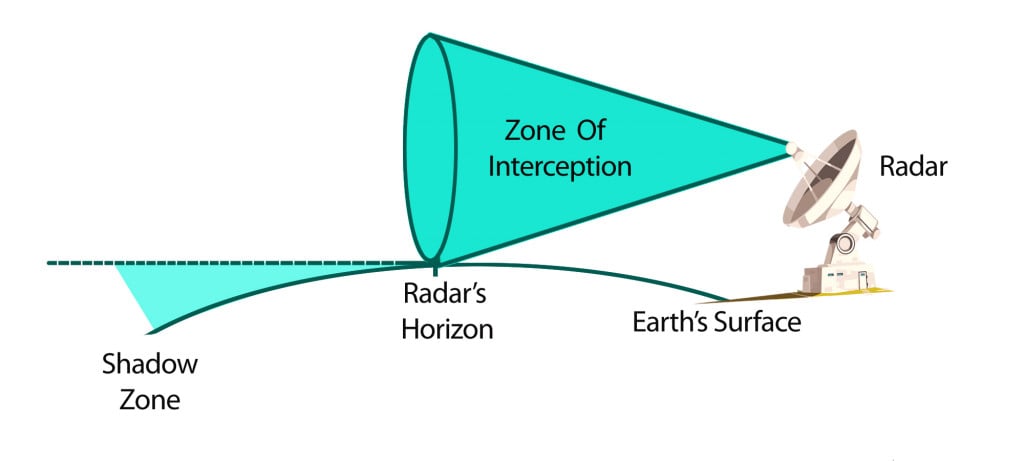
The radar intercept zone is a figurative cone, with its lower boundary determined by the curvature of the earth and the contours of the terrain
At the same time, pilots are trained to fly in regions below the line of sight of enemy radar. This region, known as shadow zoneforms between the radar horizon and the curvature of the earth.
The radar horizon is a virtual conical region that can detect objects by reflecting radio and microwaves off them.
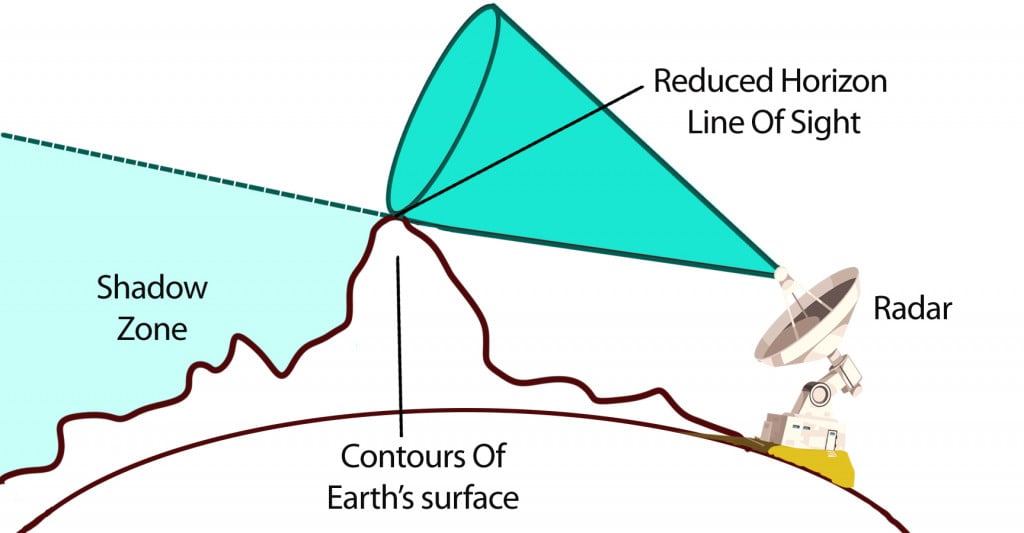
The lower limit of a radar is determined by the highest obstacle present at ground level. The presence of hills and other geographic contours (as indicated by the jagged brown line here) can greatly interfere with a radar’s line of sight.
The lower limit of this horizon is determined by the highest obstacle present at ground level, as shown in the diagram. The field of view, which is already restricted by the curvature of the Earth, is further restricted in the presence of contours. Consequently, radars located in the plain have a better field of vision than those located in the mountains.
Risks of flying a fighter jet close to the ground
Unlike other stealth flight modes, which rely on the wizardry of technology and the magic of materials engineering, NOE flights are highly dependent on the skill of the pilot. Proximity to terrain at high speeds is the greatest risk, as the probability of collision increases dramatically. At the same time, traversing variable terrain exposes the rider to extreme G-forces, which can result in a G-Loc.
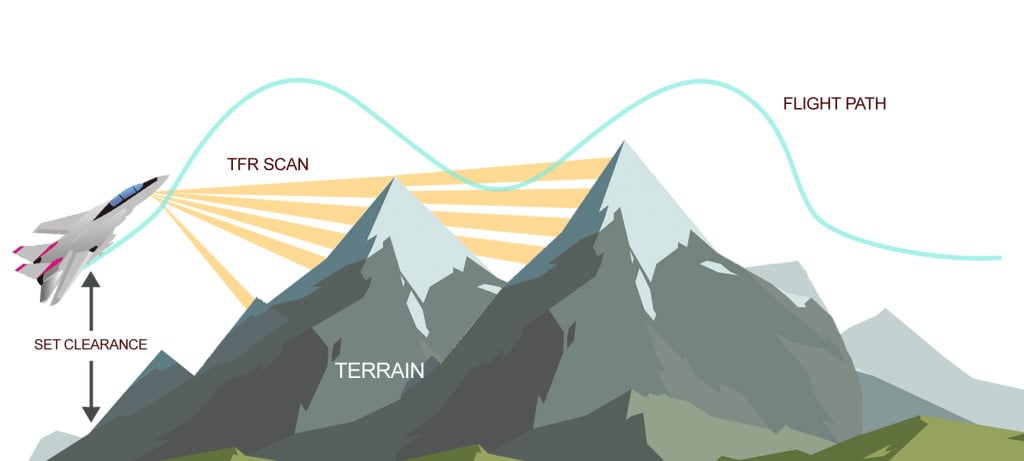
Terrain following radars anticipate terrain and help develop a flight plan to maintain a low flight altitude
Low-flying aircraft also run the risk of radio waves from their TFRs being intercepted by enemy radars, potentially exposing their positions. In addition to terrain-specific features, many man-made devices, such as cables and antennas, pose threats due to their poor visibility to the naked eye.
Types of aircraft that can perform NOE flights
Low altitude flight can be achieved by both fixed-wing aircraft and helicopters. Although helicopters cannot reach speeds equal to the former, they are able to maintain sustained flight at much lower heights. This makes them useful for extraction missions where armed personnel are involved in ground work.
A famous low-altitude operation
It’s not often that we come across publicly disclosed operations where the NOE flight has proven useful. Among the most significant military adventures undertaken by US forces, Operation Neptune Spear was carried out in 2011 to neutralize an infamous terrorist hiding in a distant country. (Source).
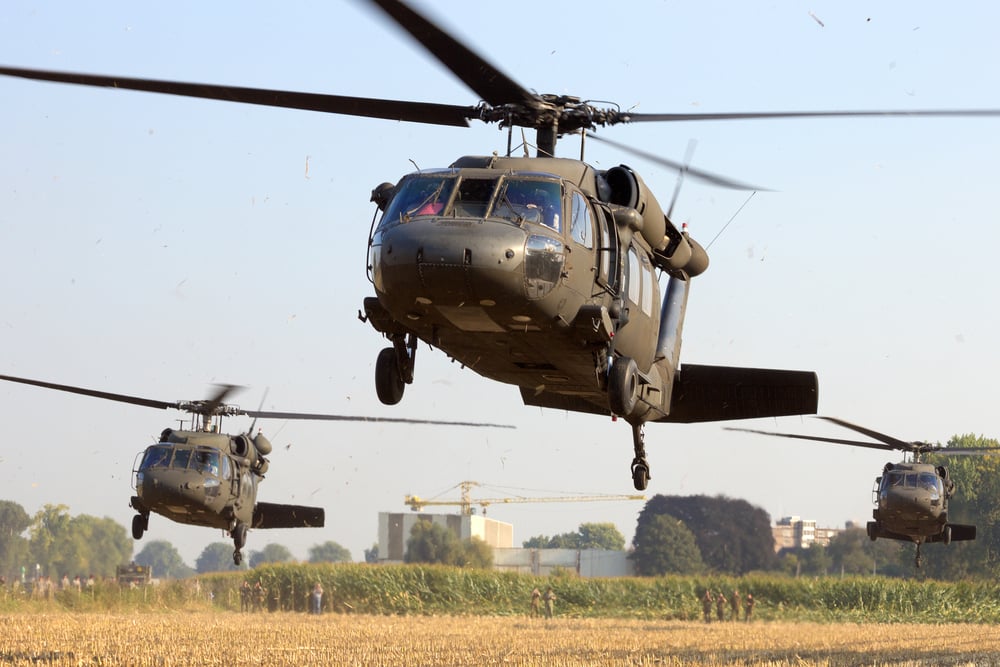
Sikorsky Blackhawk helicopters were instrumental in the clean, stealthy and fast execution of Operation Neptune Spear, thanks to their low altitude capabilities. (Photo credit: Ashmanphotography/Shutterstock)
The interesting feature presented in this case was the use of Sikorsky Blackhawk helicopters. These aircraft, while equipped with stealth technology, were notable for their extremely low flight altitude and ability to avoid detection during the operation. It remains one of the best executed missions, despite the loss of one of the two deployed Blackhawks.
Endnote – Are Speed Cameras Getting Smarter?
Conventionally programmed radars are hampered by their line of sight affected by the curvature of the Earth. Even though radar waves bend very slightly with the curvature of the Earth, they cannot detect low-profile aircraft approaching in the shadow region.
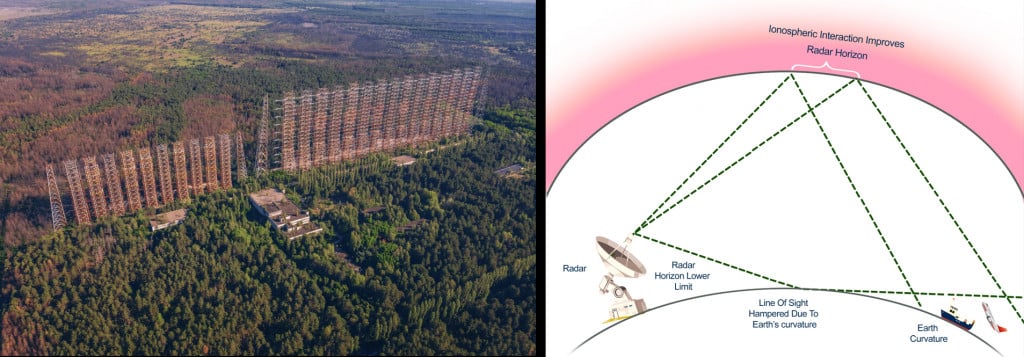
Over the Horizon or OTH radars interact through the ionosphere to improve their line of sight
To overcome this, special radar systems called “over the horizon” radars have been developed. Rather than relying on visible objects to directly reflect radiation, they use the ionosphere above us. The ionosphere enhances the radar’s field of view, revealing what would previously have been invisible!
Suggested reading
Was this article helpful?
YesNope

